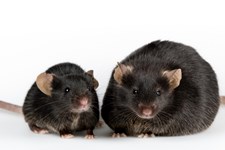News

Kisspeptin May Play a Key Role in Controlling the Circadian Rhythm of the Core Body Temperature
Kisspeptin is known to influence fertility and metabolism. In a study made by scientists at the School of Human Sciences in the University of Western Australia and Department of OBGYN and Reproductive Sciences at UC San Diego. They compared transgenic mice that totally lacked kisspeptin (Kiss1r-KO), with wild type (WT) mice and for the first time mice that have about 95% reduction in Kiss1 transcript levels (Kiss1-Cre).
In this study, Star-Oddi’s DST nano-T temperature loggers were implanted in the peritoneal cavity of three groups of mice at 8 weeks of age: Kiss1r-KO (knockout gene), WT and Kiss1-Cre (“knockdown” gene) and were set to measure at 15-minute intervals for two weeks. At 10 week of age, loggers and tissue was collected and a separate group of mice was also collected at 20 weeks of age.
Higher white adipose tissue (WAT) in female knockout mice
Although the body mass of all female mice was similar at 10 weeks of age, in the mice with the Kiss1r-KO (knockout) the WAT mass was 2x higher than in other types and leptin 3x higher indicating obesity. It is known that increased/reduced kisspeptin increases/reduces core body temperature and the core body temperature was also lower in Kiss1r-KO. It is worth noting that the drop in the core body temperature was statistically significant only in the dark phase (when mice are most active). There was also observed a reduced amplitude of the circadian rhythm and shift in their acrophase, but only when compared to the “knockdown” group. These shifts have been linked to reduced circadian entrainment and a variety of illnesses, including cancer.
No evidence of obesity in Kiss1-Cre mice
Unlike the female Kiss1r-KO mice, neither male or female Kiss1-Cre type showed evidence of obesity at 10 or 20 weeks of age and only a slight difference in acrophase compared to Kiss1r-KO mice. This might indicate that the 5% of kisspeptin that remains available is sufficient to prevent the obesity seen in global Kiss1r-KO model and to achieve metabolic regulation.
The paper was published in Molecular and Cellular Endocrinology and can be accessed here
Photo: www.sciencenewsforstudents.org/
